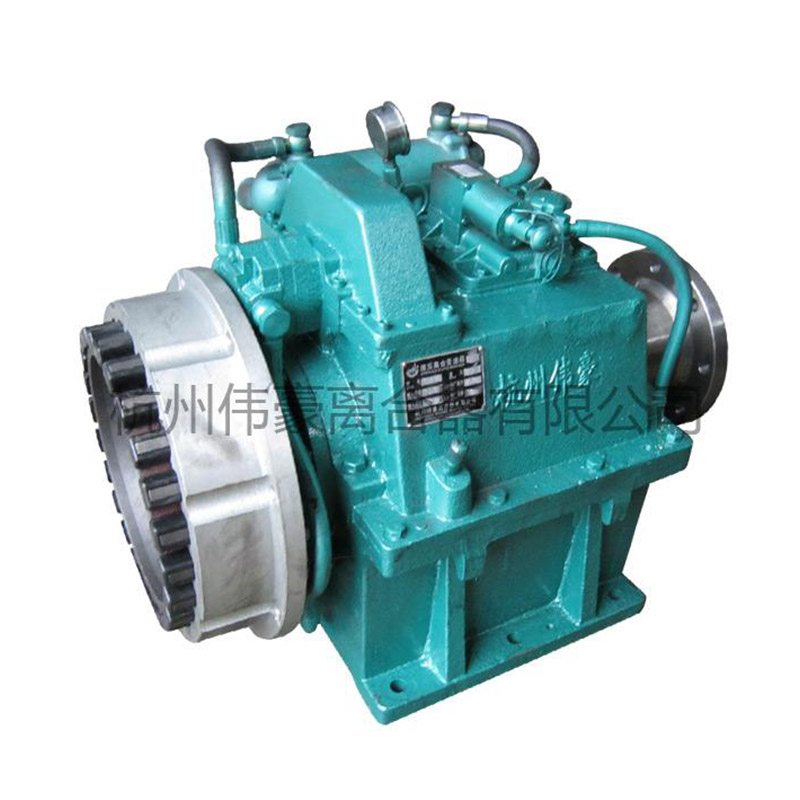With the continuous innovation and development of the global automobile industry, transmission systems, as one of the core technologies, are facing increasingly severe challenges. Especially in the fields of high performance and heavy machinery, there is an increasing demand for gear shifting smoothness, driving handling and power transmission efficiency. Against this background, Hydraulic Clutch Gearbox is gradually replacing the traditional mechanical clutch gearbox as a revolutionary technical solution. With its easy operational experience and precise control performance, this technology is becoming the preferred configuration for more and more vehicles and industrial machinery, showing its dual advantages that cannot be ignored.
The core advantage of a hydraulic clutch transmission is that it can use liquid to transmit pressure to achieve precise engagement and separation of the clutch. Traditional mechanical clutches rely on the driver to apply physical force through the foot pedal to control the clutch's operation, which not only requires a large operating force, but also leads to unevenness during gear shifting and affects the driving experience. In contrast, the hydraulic clutch is transmitted through liquid pressure, reducing the force exerted by the driver on the pedal, making the clutch easier to operate, especially during long driving, which can effectively reduce the driver's fatigue. For urban driving and frequent gear shifts, the hydraulic system is particularly lightweight, which allows drivers to enjoy a more comfortable driving experience.
In addition, the accuracy of the hydraulic system is another highlight. The hydraulic clutch transmission provides higher response speed and smoother shifting process with a high-precision hydraulic control system. This high-precision control method greatly reduces the "stuttering" and the loss of power transmission during gear shifting. In the racing field, this feature is particularly important. Drivers can complete fast and precise shifting operations in a very short time according to rapidly changing driving needs, thereby the power output of the engine and improving the overall performance and competitiveness of the racing car. Even in non-track applications, hydraulic clutch systems can still provide accurate power transmission, ensuring that drivers can flexibly adjust vehicle speed, torque and power output under complex operating conditions.
Another great advantage of hydraulic clutch transmission is its application in heavy machinery and industrial equipment. Similar to the automotive industry, engineering machinery, mining equipment, heavy trucks and other fields also face high requirements for transmission system performance. Hydraulic clutch transmissions can provide more stable and reliable performance in high load and working environments, especially under high temperature, high pressure or long-term operation, and their performance remains unabated. Compared with traditional mechanical clutch systems, the hydraulic clutch system is smoother during gear shifting, reducing wear of mechanical components and extending the service life of the equipment. This is undoubtedly a huge advantage for equipment that works for long-term and high-intensity.
More importantly, the improvement in reliability of the hydraulic clutch system directly affects the overall operational efficiency of mechanical equipment. Whether it is a crane operating on a construction site or an excavator operating in a mining area, a hydraulic clutch transmission ensures more efficient and precise operation, improves equipment productivity and reduces failure rates. Compared with traditional mechanical clutches, the hydraulic system has more uniform friction, reducing downtime due to improper operation or mechanical failure, helping companies gain an advantage in a highly competitive market environment.
Another advantage of a hydraulic clutch transmission is its adaptability and adjustability. The hydraulic system can adjust the hydraulic pressure according to different working conditions to adapt to different environments and load needs. In the field of high-performance automobiles, this flexibility allows vehicles to provide power output performance when driving at high speeds and starting at low speeds. In heavy-duty equipment, the adjustability of the hydraulic system enables the machinery to be adjusted according to different loads, ensuring the operating state under different operating environments. This flexibility and adaptability is incomparable to traditional mechanical clutch systems.
As the automotive industry continues to increase its requirements for environmental protection, energy conservation and driving experience, the market application prospects of Hydraulic Clutch Gearbox are becoming more and more broad. Many automakers are starting to use it as standard for high-end models, especially in luxury and performance vehicles, where hydraulic clutch transmissions can provide more efficient power transmission and a more comfortable driving experience. In future electric vehicles and autonomous driving vehicles, hydraulic clutch gearboxes also have application potential that cannot be ignored. They can be combined with advanced electronic control systems to provide more accurate power management solutions for future intelligent driving technology.
In short, Hydraulic Clutch Gearbox is gradually becoming an indispensable core technology in the Hydraulic automotive and heavy machinery industries with its dual advantages in operational ease and control accuracy. With the continuous maturity of technology and the expansion of application fields, hydraulic clutch gearboxes will play an increasingly important role in improving equipment performance, extending service life, and reducing failure rates. Hydraulic Clutch Gearbox will undoubtedly occupy a more important position in the future automotive and mechanical technology innovation.



 EN
EN English
English 中文简体
中文简体

 View More >>
View More >> View More >>
View More >> View More >>
View More >> View More >>
View More >> View More >>
View More >> View More >>
View More >> View More >>
View More >> View More >>
View More >> View More >>
View More >> View More >>
View More >> View More >>
View More >> View More >>
View More >>
